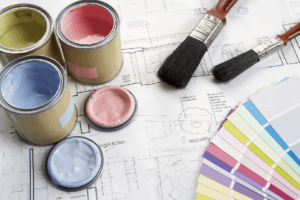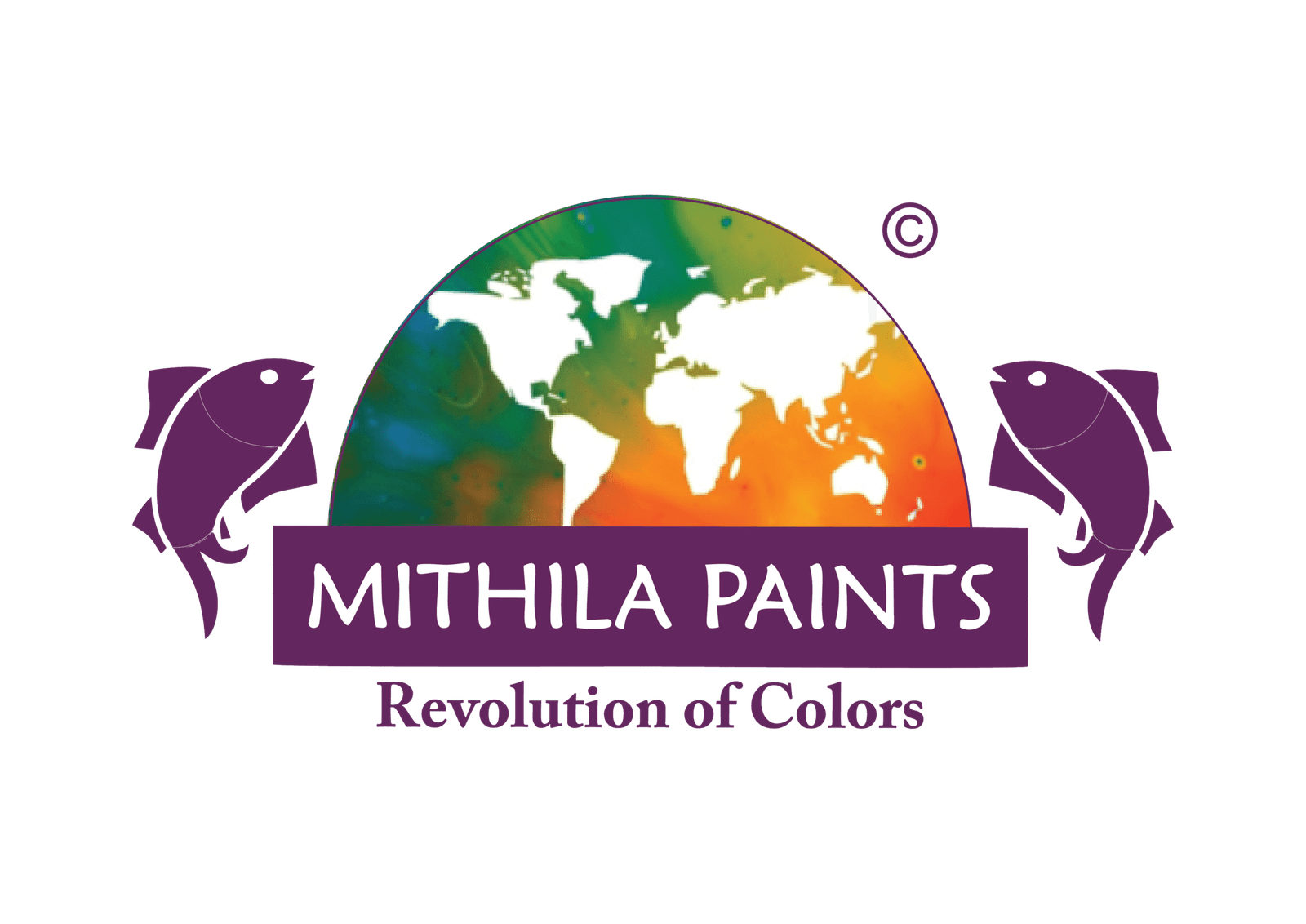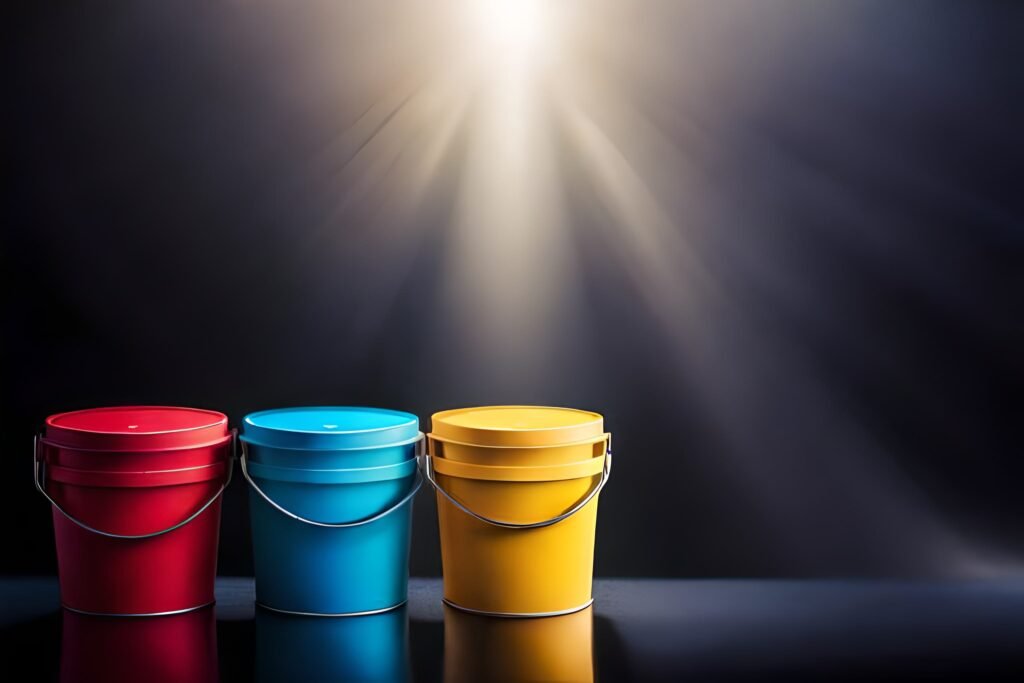Introduction to High-Durability Paint Coatings
High-durability paint coatings represent a vital advancement in protective finishing solutions, designed specifically to withstand the rigors of various environmental conditions. These coatings are formulated with specialized ingredients that enhance their resilience, enabling them to endure extreme temperatures, humidity, and exposure to chemicals. At their core, high-durability paint coatings aim to provide long-lasting protection while maintaining aesthetic appeal, making them indispensable in numerous applications.
The significance of high-durability coatings extends across multiple industries, including automotive, marine, and construction sectors. In the automotive industry, these coatings are crucial for protecting vehicles from corrosion, UV damage, and abrasion. High-durability finishes not only enhance the visual quality of automobiles but also contribute to prolonged vehicle lifespan and reduced maintenance costs. Similarly, in the marine sector, high-durability paint coatings guard against saltwater corrosion, fouling, and other harsh maritime conditions, ensuring the longevity of boats and ships.
In the construction industry, the demand for durable paint solutions is paramount, as structures are frequently exposed to diverse climatic elements. High-durability paint coatings are employed on both interior and exterior surfaces to provide a defense against moisture, mold, and mechanical wear. Their application extends to various surfaces, such as metal, wood, and concrete, providing versatility and reliability in protecting buildings and infrastructure. Moreover, the adoption of eco-friendly formulations has increasingly become a priority, as sustainability concerns shape the market for high-durability solutions.
In essence, high-durability paint coatings serve as a critical line of defense across various sectors, ensuring both protection and aesthetic value. Their advanced formulation and adaptability make them essential for industries that prioritize longevity and resilience against environmental adversities.
Types of High-Durability Paint Coatings
High-durability paint coatings are essential in various industries, providing protection and longevity to surfaces exposed to harsh conditions. Among the most common types of these coatings are epoxy, polyurethane, and acrylic coatings, each possessing unique properties that cater to different needs and applications.
Epoxy coatings are well-known for their exceptional adhesion, chemical resistance, and durability. Typically made from a combination of resins and hardeners, epoxy forms a robust barrier that is ideal for industrial environments. It is particularly effective on metal and concrete surfaces, making it a preferred choice for factory floors, warehouses, and vehicle refinishing. The durability of epoxy coatings is unmatched; they retain their integrity even under immense pressure and are resistant to moisture, oils, and most solvents.
Polyurethane coatings, on the other hand, are celebrated for their flexibility and aesthetic appeal. They can be formulated as either oil-based or water-based solutions, offering versatility in application. Polyurethane coatings are resistant to UV radiation, ensuring that colors remain vibrant and surfaces do not degrade. These characteristics make them popular for exterior applications, such as on decks, fences, and siding. Their ability to withstand varying temperatures and resist abrasion further extends their operational longevity in both residential and commercial projects.
Acrylic coatings are another option in the realm of high-durability paint coatings, known for their fast-drying properties and ease of application. Water-based acrylics are particularly beneficial for indoor uses, as they emit lower levels of volatile organic compounds (VOCs), making them more environmentally friendly compared to their solvent-based counterparts. Acrylic coatings are ideal for a range of applications, including decorative finishes, automotive refinishing, and interior trim work due to their versatility and availability in various finishes.
In summary, the selection among epoxy, polyurethane, and acrylic coatings depends on specific needs and applications. Each type of high-durability paint coating offers distinct advantages, catering to diverse environments and enhancing the longevity of surfaces they protect.
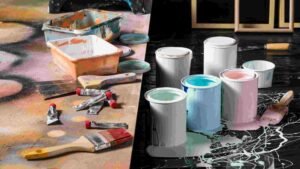
Key Benefits of Using High-Durability Paint Coatings
High-durability paint coatings have become increasingly popular across various industries due to their numerous advantages. One of the most significant benefits is their remarkable resistance to UV rays. Traditional paint formulations often degrade when exposed to sunlight, leading to color fading and surface compromise. However, high-durability coatings are engineered to withstand these harsh environmental conditions, ensuring that the surfaces they cover maintain their aesthetic appeal and structural integrity over time.
In addition to UV resistance, high-durability paint coatings exhibit strong resistance to chemical exposure. From industrial settings to residential applications, surfaces are often subjected to aggressive chemicals that can corrode and damage traditional paints. High-durability options, formulated with advanced materials, effectively resist staining and degradation caused by various chemicals. This feature significantly extends the lifespan of the surfaces coated, making them ideal for factories, hospitals, and areas prone to chemical spills.
Abrasion resistance is another critical benefit of high-durability paint coatings. Many surfaces, especially those in high-traffic areas, are vulnerable to scratches, scuffs, and general wear and tear. Coatings designed with high durability are formulated to withstand physical impacts, maintaining their appearance and functionality even under rigorous conditions. This durability not only enhances safety but also reduces the need for frequent repainting, leading to lower maintenance costs over time.
Moreover, these coatings offer outstanding moisture resistance, effectively preventing issues such as mold and mildew growth. This is particularly beneficial in humid environments or areas prone to water exposure. The ability to repel moisture ensures that substrates remain dry, thus reducing the risk of structural damage caused by water infiltration.
In summary, adopting high-durability paint coatings presents numerous advantages, including enhanced UV, chemical, and abrasion resistance, as well as moisture management. Collectively, these benefits contribute to longer-lasting surfaces, reduced maintenance costs, and improved overall performance in a variety of applications.

Performance Characteristics of High-Durability Coatings
High-durability paint coatings are increasingly recognized for their exceptional performance attributes, which include adhesion, flexibility, hardness, and gloss retention. These characteristics are crucial in determining the longevity and overall efficacy of coatings in various applications. One of the most fundamental properties is adhesion, which refers to the ability of the paint to bond effectively with the substrate. A superior adhesive quality ensures that the coating remains intact even under challenging environmental conditions, decreasing the likelihood of peeling and chipping.
Flexibility is another vital characteristic that enhances the performance of high-durability coatings. Paints that can accommodate substrate movement and expansion are less likely to crack, which is particularly important in settings where temperature fluctuations are common. This attribute not only contributes to the integrity of the coating but also protects the underlying material from moisture and corrosion, thereby extending its lifespan.
Hardness is also a key performance feature, as it indicates the coating’s resistance to damage, including scratches and impacts. High-durability coatings with optimal hardness levels allow surfaces to withstand everyday wear and tear, making them suitable for high-traffic areas in both residential and commercial properties. A sufficiently hard coating will maintain its aesthetic appeal and functional integrity far longer than less robust alternatives.
Finally, gloss retention is another critical performance characteristic of high-durability paint coatings. A coating that retains its gloss over time not only enhances visual appeal but also signifies that the protective qualities are intact. This property is essential for sustaining the aesthetic quality of surfaces exposed to harsh UV light, pollutants, and other deteriorating factors. The combination of these characteristics contributes significantly to the overall superiority of high-durability coatings, ensuring they meet the demanding standards of modern applications.
Application Techniques for High-Durability Paint Coatings
Applying high-durability paint coatings requires a meticulous approach to ensure optimal adhesion and longevity. One of the most critical steps in this process is proper surface preparation. This involves thoroughly cleaning the surface to remove contaminants such as dust, grease, and old paint. For optimal results, surfaces should be sanded or power-washed, depending on the substrate type. Additionally, any rust or corrosion must be treated appropriately to create a sound base for the coating.
Environmental considerations play a significant role in the application of high-durability coatings. Factors such as temperature, humidity, and wind can influence how the paint adheres and cures. It is advisable to apply these coatings in mild weather conditions. Ideally, temperatures should range between 50°F and 85°F, with humidity levels below 70%. These conditions allow for better evaporation of solvents and help prevent issues such as bubbling or improper drying.
When it comes to application methods, both spraying and rolling offer distinct advantages. Spraying allows for a smoother finish and is particularly effective for large areas or intricate surfaces where detailed coverage is critical. On the other hand, rolling is advantageous for its ease of use and control, especially in smaller spaces or when applying thicker coatings. Regardless of the method chosen, it is essential to maintain a consistent film thickness to achieve the desired durability.
After application, consider implementing a two-coat system. The first coat acts as a primer while the second ensures full coverage and protection. For optimal results, allow adequate drying time between coats, as per the manufacturer’s guidelines. Additionally, always follow the instruction for the specific high-durability paint coating being used to maximize performance and longevity.
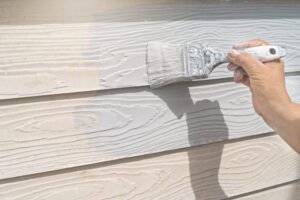
Challenges and Considerations When Choosing Coatings
Selecting high-durability paint coatings is not a straightforward task; it presents several challenges that require careful consideration. One of the primary challenges is evaluating the compatibility of the chosen coating with existing surfaces. It is essential to ascertain whether the paint adheres well to the substrate material, such as concrete, metal, or wood. A mismatch between the coating and the surface can result in poor adhesion, leading to premature wear and failure of the paint. To mitigate this risk, thorough surface preparations, such as cleaning and priming, may be necessary to enhance compatibility and optimize durability.
Another significant factor to consider is understanding potential regulatory requirements associated with high-durability paint coatings. Different regions may have varying regulations regarding volatile organic compounds (VOCs), specific chemicals, or environmental safety standards that must be adhered to. It is crucial for professionals and decision-makers to familiarize themselves with these regulations when selecting coatings to ensure compliance and avoid any legal ramifications. Choosing environmentally friendly options may further aid in reaching sustainability goals while promoting a safer working and living environment.
Furthermore, recognizing the importance of selecting the right product for specific environmental conditions cannot be overstated. High-durability coatings are often designed for specific settings, such as industrial facilities, residential areas, or exterior surfaces exposed to harsh weather. Understanding factors such as temperature fluctuations, humidity levels, and potential exposure to chemicals can guide the selection process. A product specifically tailored to withstand corrosive environments or extreme wear can significantly enhance longevity and performance.
In conclusion, the process of selecting high-durability paint coatings necessitates a comprehensive understanding of compatibility, regulatory compliance, and environmental considerations. By addressing these challenges, individuals can make informed choices that lead to successful and lasting results.
Case Studies: Successful Applications of High-Durability Coatings
High-durability paint coatings have transformed various industries by offering solutions that increase resilience while significantly reducing maintenance costs. One noteworthy case study can be found in the automotive sector, where a major car manufacturer implemented a high-durability coating on its vehicles to combat wear and tear from environmental factors. This initiative not only improved the exterior appearance but also extended the lifespan of the paint finish, drastically reducing the frequency of repainting. The company reported a 25% decrease in maintenance-related expenses over five years, showcasing the economic benefits of high-durability coatings.
In another instance, the construction industry utilized high-durability coatings on bridges and infrastructure projects. A prominent civil engineering firm applied these advanced coatings to a major highway overpass to combat corrosion from exposure to the elements. The high-durability paint formed a protective barrier against moisture and salt, which is particularly detrimental in coastal areas. As a result, the lifespan of the overpass was projected to increase by over a decade, enhancing safety and reducing the need for expensive repairs.
Furthermore, the food processing industry witnessed significant improvements by employing high-durability coatings in their facilities. One leading company upgraded its production lines with specialized coatings that not only provided resistance to chemicals and spills but facilitated easier cleaning and sanitation. The high-durability nature of the paint ensured that surfaces remained intact despite frequent exposure to harsh cleaning agents, thereby promoting a safer working environment. Within two years, the company noted a 40% reduction in downtime due to maintenance.
These case studies exemplify the practicality and effectiveness of high-durability paint coatings across various sectors. By addressing specific challenges—be it environmental exposure, maintenance needs, or safety concerns—these coatings illustrate their role as a vital component in achieving long-lasting, cost-effective solutions.
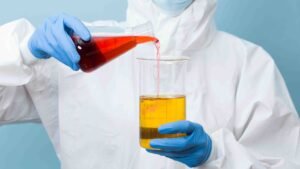
The Future of High-Durability Paint Coatings
The landscape of high-durability paint coatings is evolving rapidly, shaped by a myriad of innovations and growing environmental consciousness. One of the most significant trends is the shift towards eco-friendly formulations. Manufacturers increasingly prioritize the development of coatings that minimize environmental impact while maintaining performance standards. These formulations often utilize renewable resources and lower volatile organic compounds (VOCs), accommodating stricter regulatory requirements and consumer preferences for sustainable options.
Additionally, industries are increasingly demanding sustainable solutions that correspond with broader environmental goals. For example, the construction sector is adopting high-durability coatings that support energy efficiency by providing thermal insulation and reflecting harmful UV rays. This is particularly crucial as buildings strive toward zero-emission targets and improved energy performance standards.
Furthermore, in the automotive sector, innovation in high-durability paint coatings is critical for the production of lightweight materials that enhance fuel efficiency. These approaches not only reduce the ecological footprint of vehicles but also align with the industry’s transition toward electric and hybrid models.
As we look to the future, the evolution of high-durability paint coatings seems promising, marked by a commitment to sustainability and advanced technology. Such innovations will move toward a more resilient and environmentally responsible application, catering to the increasingly conscious consumer and regulatory standards.
Conclusion
Throughout this discussion, we have explored the evolution and significance of high-durability paint coatings in various applications. These coatings have advanced remarkably over the years, reflecting innovations in technology and materials that enhance their resilience and performance. With their enhanced ability to withstand extreme weather conditions, chemical exposure, and physical abrasion, high-durability paint coatings have become essential for not only protecting surfaces but also prolonging the life of structures.
Investing in high-durability coatings offers numerous long-term benefits, particularly in commercial and industrial settings where maintaining aesthetics and functionality is crucial. The initial costs associated with these advanced coatings may be higher compared to standard options, but the longevity and reduced maintenance needs significantly offset these expenses over time. Additionally, high-durability paint coatings contribute to sustainability by minimizing the frequency of repainting and conserving resources, thus aligning with green building practices.
More importantly, these coatings ensure that surfaces maintain their visual appeal while providing a protective barrier against damage. Industries that prioritize safety and compliance, such as automotive and aerospace, benefit greatly from the enhanced durability these coatings offer. As we move toward fostering environmentally responsible practices, utilizing high-durability paint coatings not only enhances performance but also promotes a reduction in waste.
In light of these considerations, it is evident that choosing high-durability coatings is a strategic investment for various projects. When planning any construction, renovation, or maintenance activities, stakeholders should carefully consider these advanced coatings to secure the longevity and integrity of their investments. Emphasizing quality through high-durability options will ultimately lead to more resilient structures that stand the test of time.
